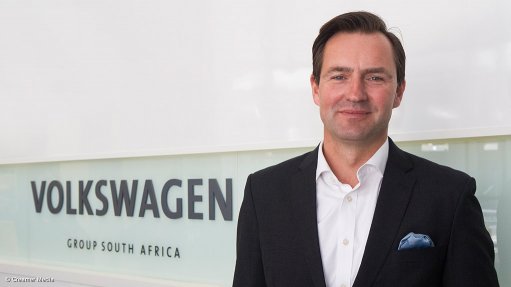
Thomas Schäfer.
German car manufacturer Volkswagen has established Volkswagen Sub-Saharan Africa as a regional operation, in a move aimed at developing and strengthening the African market.
The new region joins the existing regions of North America, South America and China, and forms part of Volkswagen’s strategy to position itself in selected focus areas.
The Sub-Saharan Africa region will be headed by Volkswagen Group South Africa (VWSA) MD and chairperson Thomas Schäfer.
Sub-Saharan Africa comprises 49 countries and has a total population of nearly 920-million people.
“Africa is one of the blank spots on the Volkswagen map,” says Schäfer.
“There is, however, enormous potential in the region to meet the mobility needs of a burgeoning middle class. We will drive forward the development of these new markets in cooperation with various African governments – and gradually strengthen and expand the new Sub-Saharan Africa region.”
The Volkswagen brand has three operations in the region, namely South Africa, where the company has been building cars since 1951; Nigeria, where vehicle assembly started in 2015; and Kenya, where assembly kicked off in December last year.
Kenya assembles the Polo Vivo from kits supplied from the VWSA plant, in Uitenhage. Output will be around 1 000 units this year – in a new-car market of 3 000 units.
Nigerian assembly has hit a snag, with the country starved of the necessary forex to buy kits, says Schäfer.
The next target is Rwanda, where Volkswagen will launch an integrated mobility concept at the end of the year.
The concept provides for app-based mobility solutions such as car sharing and ride hailing.
For this purpose, a local vehicle production facility is to be established in the capital city Kigali, to cover vehicle demand for the integrated mobility concept.
Schäfer says establishing an assembly plant should be easy in a business-friendly country such as Rwanda.
“We can activate an assembly plant in three months, as we did in Kenya.”
Industrial Experiment
Schäfer commissioned a study into the potential of the African market with professional services company KPMG.
This study indicated that four African countries held the most potential for growing their new-vehicle markets. They were Kenya, Tanzania, Rwanda and Ethiopia.
VWSA approached the governments of these countries – all largely vehicle importers – noting that Volkswagen could assist in their industrialisation efforts through the establishment of vehicle assembly plants.
Success, however, would depend on the governments of these countries backing up any assembly effort with policies that support manufacturing, such as curbing rampant second-hand vehicle imports.
“For now this is a sort of industrial experiment, but it is important that it works,” says Schäfer. “The rest of the world cannot easily access Africa, but South Africa can. Africa, in [terms of new-vehicle sale] numbers, is not attractive right now, but it will be, so we need to get it right.”
Schäfer is particularly impressed by the Rwandan government.
“Rwanda is run like a company, and the country is not dependent on commodities. Often, in Africa, commodity prices go down and everybody says they must diversify, but then prices go up, everyone buys champagne and no industrialisation happens.”
Schäfer believes the Rwanda new-car market can grow to between 50 000 to 100 000 vehicles a year in the medium term, however, this is dependent on blocking the importation of used vehicles.
The Volkswagen plant in Rwanda will most likely assemble vehicles such as the Tiguan and Caddy. The vehicle will be shipped to South Africa as fully built up units, disassembled into kits, and shipped to Rwanda.